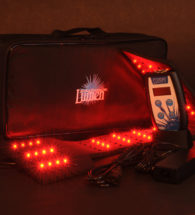SHINGLES ACUTE HERPES ZOSTER – NATURAL RECOVERY PROGRAM…


Herpes Zoster Protocols
Nutriodine drops in filtered water
AllicinMED
NutriDefense
Zinc Picolinate
NeuroGEN
Power C PLUS
Cell Defense
CoQ10 Supreme Ubiquinol
ADVANCED…
NeuroGEN
Cognition PLUS
BrainMAG
Ultra Thiramine B1
Cell Detox Glutathione
Gamma E PLUS
LUMEN PHOTON SETTING 7 FOR PAIN AND SETTING NICO WHEN PAIN IS SETTLING TO STIMULATE REGENERATION OF NERVES ..

Herpes zoster, commonly known as Shingles, is a viral infection that is caused by the chickenpox virus. Adults with a weak immune system are most likely to be affected by Shingles. Pain and a rash on one side of the body are the most noticeable shingles symptoms. As a child or young adult, many individuals experience an episode of chickenpox. Once the chickenpox stops showing symptoms, the virus is still present in the body, latent in nerve cell bodies. This virus is then later the cause of shingles, usually many years after the original infection. Headache, fever, and malaise are initial signs of shingles. Feelings of burning pain, itching, hyperesthesia, or paresthesia commonly follow these symptoms. Then after one or two days, the characteristic skin rash appears. Usually the rash is on the torso, although it may affect the face, eyes, or other parts of the body. Although the rash looks similar to hives, it is generally a stripe pattern on one side of the body. This stripe patter occurs because the virus affects sensory nerves. Eventually small blisters will form, accompanied with continued fever and malaise. When the vesicles fill with blood, they will become darkened in color. In about a week, they will crust over. When the crusts fall off, the skin heals, rarely leaving scarring or discolored skin. There are several risk factors that can increase your chances of developing shingles
- Advanced age is one factor. About one in four adults, with generally good health, will get shingles sometime in their lifetime. Most people who develop shingles are over the age of 40.
- A weakened immune system will also play a role. HIV infection, cancer, cancer drugs, radiation treatments, or an organ transplant will significantly impact your immune system, leaving your vulnerable to shingles.
- Stress or a cold could even temporarily put you at risk.
- The other factor that plays a role is whether a child’s mother had chickenpox late in pregnancy. If she had it 5 to 21 days before giving birth, or if the child had chickenpox in infancy, there is an increased risk of pediatric shingles.


Disclaimer: These Wellness Protocols are not intended to replace the attention or advice of a physician or other qualified healthcare professional. These statements have not been evaluated by the Food and Drug Administration. These products are not intended to diagnose, treat, cure, or prevent any disease.

